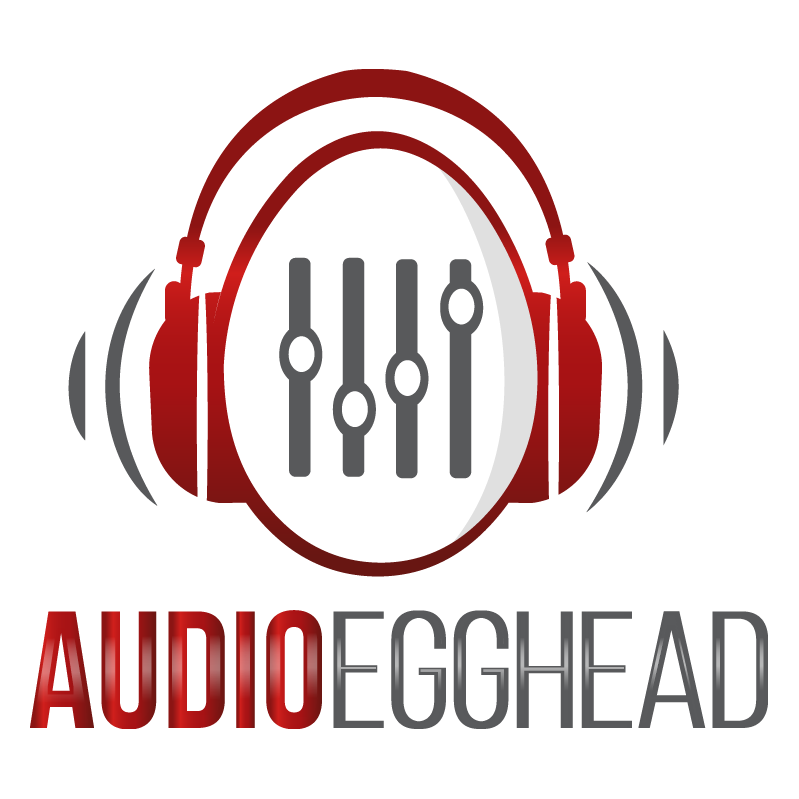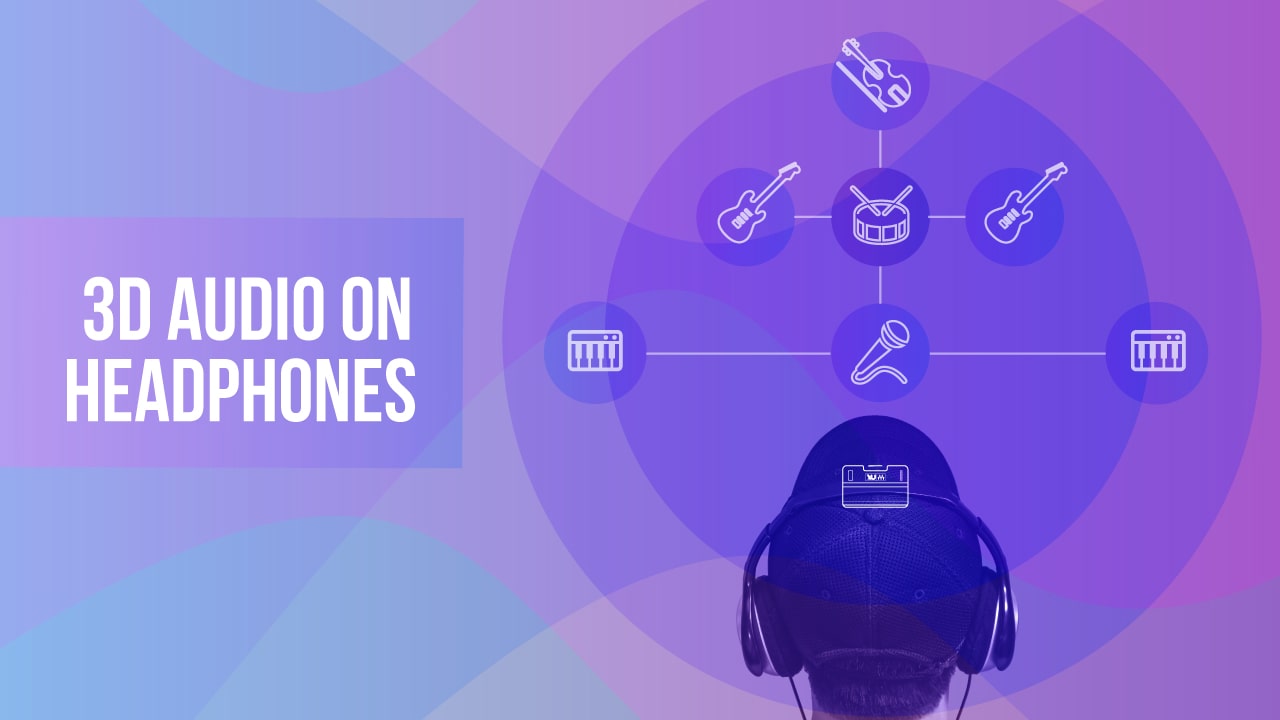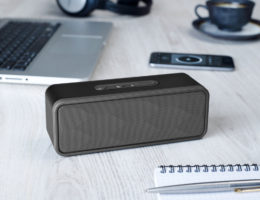So, what is 3D audio? Three-dimensional listening is a natural occurrence in everyday life, and while many people understand the general concept, many still wonder: what is 3D audio exactly? Understanding spatial sound is a complex experience. The way we listen to the real world is not necessarily the same as the listening experience we get through personal headphones. 3D audio can help bridge the gap to a true-to-life audio experience.
What Is Real World Listening?
In simple terms, 3D audio was created for the listener who wants to feel like they are in the same room as the band. By placing a number of speakers around the listener, a real world experience can be accomplished. 3D headphones offer the same experience.
Spatial sound in the real world can be complex when you’re combining acoustic sound waves and the space of a specific room. The reactions created by the inner ear and the audio nerve must be understood by the brain’s interpretation of sound. When listening to regular headphones, the left and right speaker configuration directs only specific channels to each ear. In the real world, sound is processed in both ears without any perceived shift from a headphone. These different listening styles merge with 3D audio headphones.
The Differences Between Regular Headphones and 3D Headphones
In the real world, sound is heard from many different angles, which provide a rich listening quality. When understanding what 3D audio is, simply hearing real world sounds is close enough to the experience. Listening to regular headphones, however, is a different type of experience.
The Regular Headphone Experience
When soundwaves from a source travel through the air and to the eardrum, the sound wave is filtered. Because of the size and shape of one’s ear, the effect is then delayed. Sound waves will arrive at both ears at slightly different times with varying frequencies. Depending on the angle, the delay in frequencies impacts spatial awareness at different levels.
This is why 3D sound feels as if it has shape. The distances and direction match the length of the waves, which makes sound seem as if it is surrounding the listener. When regular headphones are used, the sound is no longer processed in the same way. Instead, the sound is directly filtered through the ear.
Regular headphones make perceiving the spatial intentions of the recording very difficult. Mixing audio on regular headphones can contradict spatial cues which impact the frequency. Without understanding spatial differences from different auditory channels, the sound can fall flat, greatly reducing the quality of the sound.
Since the brain is trying to understand the spatial audio scene with contradictory cues, listening fatigue is more likely to happen while using regular headphones. Surround sound on regular headphones cannot convey the spatial distance surrounding the listener. Without 3D headphones, the dimension of sound would never have the same dynamic.
The 3D Headphone Experience
3D headphones create an experience where the listener feels as if they can hear all the sounds surrounding them, but through their headphone speakers instead. By manipulating where sound takes place in the right or left speaker, distance and perceived direction of soundwaves can be created.
Instead of hearing everything equally in both ears, each headphone speaker will act and play independently, giving the right ear and the left ear a different individual experience, and the listener a fully immersive audio, true-to-life experience.
Understanding the answer to the question “what is 3D audio” is understanding real-world listening. Anybody can tell when they are listening to the outside world compared to a headphone set. 3D headphones can help merge the two together so that real-world listening can be captured inside a headphone set.
By connecting the spatial understanding of sound and frequency, 3D headphones can convince the brain that the sounds being heard through headphones are coming from actual speakers positioned in three-dimensional space. This has the option for both stereo and surround sound systems.
With optimized filters, there is minimal frequency altercation so that sounds are relating to space rather than an equalizer. 3D headphones convey sound
that is natural to the brain.
How Does 3D Audio Work?
3D audio works by tricking the brain into thinking that sounds are spaced in particular positions near the listener. By using 3D audio effects and special positioning, a full sound is created.
What Is a 3D Audio Effect?
Stereo speakers produce a number of different sound effects that involve spatial processing. The 3D audio effect uses sound waves to mimic natural sound waves. This type of transformation feels like three-dimensional space. By tricking the brain using auditory nerves, the feel of the sound is 3D.
What Is 3D Positional Audio?
3D positional audio effects were first seen in the 1990s by game consoles and PC games. By using specific types of reverberation, the sound changes from the original source to the listener’s ear.
These effects can include the localization of sources from behind, above, or below the person listening. Although the listener is not really hearing sounds in real life, because of the way the audio effects occur, their understanding of sound feels similar to real life sound.
Why Is 3D Audio So Popular Now?
3D audio has been a popular sound effect in certain films for years. Because of the surround sound that makes viewers and listeners feel as if they are truly in the movie, the effect has been used for decades.
3D audio has been especially important and popular due to the rise in popularity of VR headsets. The goggles take care of the real life visual effects, and the VR headset does the same for the sound, helping to transition your mind from being in your living room to a fantasy world of your choosing.
When Was 3D Audio Created?
3D audio has actually existed for over 130 years. It was originally French engineer Clement Ader who discovered 3D audio technology. When people posed the question, what is 3D audio, the answer was still the same.
His invention of the theatrophone, a transmission system involving various microphones placed in different sections and in different positions on a stage, transmitted sound through telephone receivers. Though the sound quality was not up to today’s standards, the idea of bringing 3D sounds to a 3D space was the same.
What Is 3D Audio for Virtual Reality?
With the relatively new phenomenon of living our lives online, 3D audio aims to bring real life sound into all aspects of our lives, including gaming.
With the advent of virtual reality, 3D audio can fully immerse someone in their own world. Unlike movies, where the listener and viewer are a passive audience, video games are designed for the specific purpose of immersing the player. 3D audio can create a realistic effect for games created as fantasy or real life. Because the player is making decisions on how the game should run, the 3D sound helps infuse an even more realistic feel to its players.
Essentially, 3D audio for video gaming and other types of virtual reality is the same as it is for music. Because of the spatial components that 3D audio understands, the sound quality of a game or virtual experience is heightened through the speakers. Because almost all smartphones are capable of having 3D audio, the experience is relatively easy to accomplish.
Are There Other 3D Audio Devices?
Each mainstream virtual reality headset is able to support 3D audio. This includes the Sony PlayStation VR, Samsung Gear VR, Oculus, Google Daydream, and more.
What Is a 3D Audio Headset for Multiple Types of Phones?
Sennheiser created the Ambeo Smart Surround headphones for Android and iPhone headsets. This particular headset can also record audio. Since this 3D audio headset can attach to either phone, it can be used by more people.
What Is a 3D Audio Presentation?
An audio presentation of 3D sound demonstrates the capacity of headphones in a public setting. Depending on the presentation, soundscapes vary in what the listener may hear.
Demonstrations of 3D Audio
One demonstration of 3D audio is located at Disney’s Hollywood Studios. They provide a film with special 3D audio headphones for their guests to wear. In the film, they include a 3D audio sound track played in the dark for maximum focus on sound quality.
Music is not the only available way to utilize 3D audio. Audio books can also use 3D sound for a larger impact on what’s being said. Nick Cave’s novel The Death of Bunny Munro was recorded in 3D audio.
Popular albums that were recorded in 3D audio include Lou Reed’s Street Hassle, Pearl Jam’s Binaural, Otmar Liebert & Luna Negra’s Up Close, Audio Stax’s The Space Sound, Art Tatum’s Piano Starts Here, Rachmaninoff’s Rachmaninoff Plays Rachmaninoff, and Perfume Genus’s No Shape.
Pink Floyd’s Their Mortal Remains exhibition recreated the song Comfortably Numb using 3D audio sound. Instead of using 3D audio headphones, London’s V&A chose to set up 25 speakers. By placing the speakers in specific positions, the 3D audio sound filled the exhibit with the same kind of sound that would have occurred if Pink Floyd was actually playing right in front of the listeners.
3D nightclubs are also gaining traction. DJ Dolby Atmos has performed using 3D audio at the Ministry of Sound, London. The Jago 3D Sound Project is experimenting with ambisonics combined with STEM music for a more futuristic experience.
The Future of Sound
Although 3D audio has been around for a long time, we are increasingly finding new and inventive ways to use it. The idea of real world sound may not seem like a new idea because we are used to the external sounds of our life filling up space in a way that matches our reality. Taking that same level of spatially rich sound and harnessing it in a headphone set, however, may seem other-worldly.




